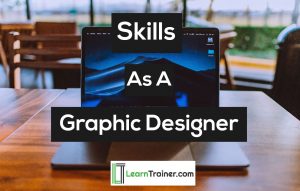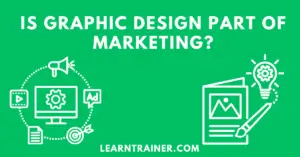How Was Graphic Design Used In Film And Television?
From the early days of cinema to the modern age of streaming services, graphic design has played a vital role in enhancing the visual storytelling of our favorite movies and TV shows. In this blog, we will delve into the history, techniques, and impact of graphic design in the world of entertainment.
Early Uses of Graphic Design in Film and Television:
Graphic design has played a crucial role in the entertainment industry, particularly in film and television. From the early days of silent films to the modern era of blockbuster movies and binge-worthy TV shows, graphic design has been instrumental in creating captivating visual experiences for audiences.
The earliest use of graphic design in film and television can be traced back to the early 1900s, when filmmakers began experimenting with title cards and intertitles to convey dialogue and important information to viewers. These title cards were often hand-drawn and featured elaborate typography, adding a touch of artistry to the otherwise silent films.
As the film industry grew, so did the use of graphic design in movie posters and promotional materials. In the 1920s, movie studios began commissioning artists to create eye-catching posters to advertise their films. These posters often featured bold typography and striking illustrations, setting the tone for the film and enticing audiences to see it.
Evolution of Graphic Design Techniques and Technology:
The use of graphic design in film and television continued to evolve with the advancement of technology. In the 1930s, the introduction of Technicolor allowed for the use of vibrant colors in films, leading to more visually stunning movie posters and promotional materials.
In the 1950s, the rise of television brought about new opportunities for graphic designers. Title sequences and opening credits became an important part of television shows, with designers using innovative techniques such as animation and motion graphics to create visually engaging introductions.
With the introduction of computers and digital technology in the 1980s, graphic design in film and television took a giant leap forward. Designers now had access to a wide range of digital tools and software, allowing them to create more intricate and realistic visual effects and illusions. This opened up a whole new world of possibilities for filmmakers, making it easier to bring their visions to life on screen.

Are you on a quest for flawless, youthful skin? Look no further! The Hydra Pen H3 Microneedling Device is here to revolutionize your skincare routine. Combining the power of microneedling with advanced hydradermabrasion techniques, this innovative device promises to transform your skin from within.
What Makes the Hydra Pen H3 Special?
- Enhanced Serum Absorption: The precisely designed needles create microchannels in the skin, allowing for enhanced absorption of serums and nutrients. This means your skin gets the maximum benefit from your favorite skincare products.
- Automatic Serum Application: The Hydra Pen H3 features an automatic serum application system. As the cartridge moves vertically across your skin, it delivers serum evenly, ensuring deep penetration and superior results.
- Adjustable Needle Length: With a needle length adjustment from 0-1.0mm, the Hydra Pen H3 caters to various skincare needs, whether you’re targeting fine lines, acne scars, or simply aiming for a smoother complexion.
- LED Screen and Digital Display: The device comes with an LED screen that allows you to adjust the speed and intensity of the treatment, making it easy to customize your skincare experience.
- Rapid Skin Tissue Repair: The micro-needling function stimulates cellular regeneration and enhances skin vitality and elasticity, effectively doubling the healing benefits compared to manual application.
Why Choose the Hydra Pen H3?
- Tailored Treatment: Whether you’re dealing with specific skin issues or just want to maintain a healthy, youthful appearance, the Hydra Pen H3 offers a tailored and efficient treatment experience.
- Promotion Package: Take advantage of our promotion package, which includes a 2ml DLMR 30% PCL serum along with the Hydra Pen H3 kit. This serum is sold separately for $49.99 USD, but you can get it for free with your purchase.
The Impact of Technology on Graphic Design Techniques:
The advancements in technology have not only made it easier for designers to create stunning visuals, but it has also influenced the way stories are told on screen. With the use of computer-generated imagery (CGI), filmmakers can now create elaborate and fantastical worlds that were once impossible to achieve using traditional methods.
The use of motion graphics and animation has also become a staple in both film and television, adding depth and dimension to the storytelling process. These techniques have also been used in creating memorable title sequences and promotional materials, further enhancing the visual appeal of a project.
Enhancing Storytelling and Setting the Scene:
It is responsible for creating the visual world that captures our attention and immerses us in the story. From enhancing storytelling to creating stunning visual effects, graphic design is an essential element in the production of films and TV shows.
One of the primary functions of graphic design in film and television is to enhance storytelling and set the scene. Through the use of graphics, filmmakers can create a specific atmosphere and mood, making the audience feel like they are a part of the story. For example, in the movie “Harry Potter,” the intricate and detailed graphic designs of Hogwarts School of Witchcraft and Wizardry help transport the audience into the magical world of the film.
Graphic design also helps to establish the time and place of a story. For period films, designers use historical references to create accurate and visually appealing sets and props. In the TV series “Mad Men,” the graphic design of the 1960s era is reflected in the show’s title sequence, set design, and costumes, setting the scene and immersing the audience in the time period.
Creating Visual Effects and Illusions:
Graphic design is also responsible for creating stunning visual effects and illusions in film and television. With advancements in technology, designers can now bring to life anything that the filmmakers can imagine. From creating realistic creatures and worlds to enhancing action sequences, graphic design plays a significant role in making the impossible seem possible on screen.
In the movie “Avatar,” graphic designers used their skills to create the visually stunning and lifelike world of Pandora, immersing the audience in the film’s fantasy world. In the TV series “Game of Thrones,” graphic design is used to create the dragons, White Walkers, and other fantastical creatures, making the audience believe in their existence.
Designing Movie Posters and Promotional Materials:
Graphic design is also crucial in marketing and promoting films and TV shows. Movie posters and promotional materials are often the first point of contact for audiences, and they play a significant role in attracting viewers. A well-designed movie poster can capture the essence of a film and entice audiences to watch it.
Graphic designers work closely with filmmakers and marketing teams to create eye-catching and memorable posters that represent the film’s tone and story. For example, the iconic poster for “Jaws” with its simple yet powerful design of a shark fin has become synonymous with the film and is instantly recognizable.
In TV shows, graphic design is also used in promotional materials such as billboards, social media posts, and trailers. These designs help build anticipation and generate buzz for upcoming episodes or seasons.
Creating Title Sequences and Opening Credits:
One of the first things that viewers see when tuning into a TV show is the title sequence and opening credits. This is where graphic design truly shines, as it sets the tone for the entire show and captures the audience’s attention. The role of graphic design in this aspect is to create a visually appealing and memorable sequence that reflects the show’s theme and genre.
Designers use a combination of typography, animation, and visual effects to create these sequences. They carefully select fonts and colors that align with the show’s branding and create a cohesive look. A great example of this is the opening credits of the hit TV show, “Stranger Things,” where the retro-inspired font and neon colors perfectly capture the show’s 80s sci-fi vibe.
Designing Set Pieces and Props:
Graphic design is not limited to just digital mediums; it also plays a significant role in physical set design. Designers work closely with production teams to create set pieces and props that enhance the visual storytelling of a show. This can range from designing a futuristic control panel for a sci-fi series to creating vintage posters for a period drama.
Set pieces and props not only add to the aesthetic of a show but also help to establish the time and place of the story. They can also serve as subtle hints or clues for the audience, adding an extra layer of depth to the storytelling. For instance, in the popular TV series “Game of Thrones,” the intricate designs on the Iron Throne itself symbolize the various houses and kingdoms vying for power in the show.
Enhancing Visual Storytelling and Branding:
Graphic design is a powerful tool in enhancing visual storytelling in television. It helps to create a cohesive and immersive world for the audience, making the viewing experience more engaging and memorable. From designing elaborate maps and diagrams to creating unique symbols and logos, graphic design adds an extra layer of detail to the storytelling.
Moreover, graphic design also plays a crucial role in branding and visual identity in television. It helps to establish a recognizable and consistent look for a show, making it stand out in a crowded market. The iconic logo of “The Simpsons” or the distinct color palette of “Breaking Bad” are just some examples of how graphic design has contributed to the branding of these popular TV shows.
Famous Examples of Graphic Design in Film:
When it comes to film, graphic design plays a crucial role in creating a visual experience for the audience. From designing movie posters to creating visual effects, graphic design has been an integral part of the film industry for decades. In this chapter, we will analyze some of the most iconic movie posters and their use of graphic design. We will also examine how graphic design has contributed to the success of popular films like Star Wars and Jurassic Park.
Analysis of Iconic Movie Posters and Their Use of Graphic Design:
Movie posters are one of the most important marketing tools for a film. They not only serve as a visual representation of the movie but also play a significant role in attracting audiences to the theaters. The use of graphic design in movie posters has evolved over the years, with designers constantly pushing the boundaries to create eye-catching and memorable designs.
One of the most iconic movie posters of all time is the poster for the 1977 film, Star Wars. Designed by Tom Jung, the poster features a striking image of Luke Skywalker holding a lightsaber with Princess Leia by his side. The use of bold colors and dynamic typography instantly captures the attention of the audience and sets the tone for the epic space adventure that is to come.
Similarly, the poster for Jurassic Park, designed by John Alvin, also uses bold colors and typography to create a sense of adventure and danger. The iconic image of the T-Rex skeleton against a black background is instantly recognizable and has become a symbol of the film.
Examining the Use of Graphic Design in Popular Films like Star Wars and Jurassic Park:
Graphic design is not only limited to movie posters but also plays a crucial role in creating visual effects in films. In Star Wars, the use of graphic design was essential in bringing the futuristic world to life. From designing the iconic lightsabers to creating the intricate details of the spaceships, graphic designers were instrumental in creating the visual effects that made the film a success.
Similarly, in Jurassic Park, graphic design played a crucial role in creating the realistic dinosaurs that were the main attraction of the film. The use of computer-generated imagery (CGI) and graphic design techniques brought these prehistoric creatures to life and made them seem almost real to the audience.
How Graphic Design Has Contributed to the Success of these Films:
The success of films like Star Wars and Jurassic Park can be attributed, in part, to the use of graphic design. The visually stunning movie posters and the innovative use of graphic design in creating visual effects have helped these films stand the test of time and become cultural icons.
Graphic design has also played a significant role in creating a sense of branding and recognition for these films. The iconic images and designs associated with these films have become synonymous with the brand and have helped to keep them relevant even decades after their release.
Advancements in Technology and Its Impact on Graphic Design In Film and Television:
As we continue to see advancements in technology, it is inevitable that the world of graphic design in film and television will also evolve. From the early days of hand-drawn illustrations to the use of computer-generated imagery, graphic design has played a crucial role in shaping the visual landscape of the entertainment industry. But what does the future hold for graphic design in film and television? Let’s take a look at some of the predictions and potential advancements that may shape the future of this industry.
One of the most significant advancements in technology that has had a major impact on graphic design in film and television is the use of computer-generated imagery (CGI). This technology allows for the creation of stunning visual effects and has revolutionized the way movies and TV shows are made.
With the use of CGI, designers are able to create realistic and immersive environments that were previously impossible to achieve. This has opened up a whole new world of possibilities for filmmakers and has greatly enhanced the visual storytelling experience for audiences.
Another technology that has made a significant impact on graphic design in film and television is virtual reality (VR). With the ability to create fully immersive and interactive environments, VR has the potential to completely change the way we watch movies and TV shows.
With VR, viewers can become fully immersed in the story and feel like they are a part of the action. This technology has the potential to create a more engaging and immersive experience for audiences, and we may see more and more films and TV shows utilizing VR in the future.
Predictions for The Future of Graphic Design in Film and Television:
As technology continues to advance, we can expect to see even more innovative and cutting-edge techniques being used in graphic design for film and television. One of the most exciting predictions for the future is the use of artificial intelligence (AI) in graphic design.
With AI, designers will be able to create complex and realistic graphics in a fraction of the time it would take to do manually. This will not only save time and resources but will also allow for more creativity and experimentation in the design process.
Another prediction is the use of augmented reality (AR) in film and television. AR technology allows for the integration of digital elements into the real world, creating a seamless blend of the two.
This has the potential to enhance the viewing experience by adding an extra layer of depth and interactivity to the visuals. We may see more films and TV shows incorporating AR elements to create a more immersive and engaging experience for viewers.
How Graphic Design Will Continue to Shape the Visual Landscape of Film and Television:
Graphic design has always played a crucial role in the entertainment industry, and it will continue to do so in the future. With the advancements in technology, designers will have even more tools at their disposal to create stunning and impactful visuals. From creating realistic and immersive environments to enhancing storytelling and setting the scene, graphic design will continue to shape the visual landscape of film and television.
In addition, graphic design will also play a crucial role in branding and marketing for films and TV shows. With the rise of streaming services and online platforms, there is a growing need for eye-catching and memorable visuals to attract audiences. Graphic designers will continue to create visually striking posters, promotional materials, and title sequences that will help to build excitement and anticipation for upcoming releases.
Conclusion:
In conclusion, the future of graphic design in film and television is full of exciting possibilities. With the advancements in technology, we can expect to see even more innovative and visually stunning designs in the entertainment industry. From the use of AI and VR to the integration of AR elements, graphic design will continue to enhance the viewing experience for audiences and play a crucial role in storytelling and branding. As we look towards the future, it is clear that graphic design will remain an integral part of the film and television industry.

